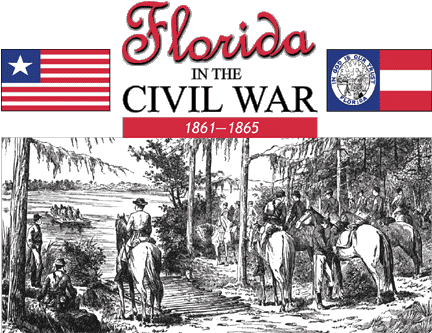Introduction

On the eve of the Civil War in early 1861, Florida was a rural frontier state that had joined the Union just fifteen years before. Its population of 140,000 was by far the smallest of any of the states that formed the Confederacy. Nearly 63,000 of the population were African Americans, most of whom were slaves working in an agricultural-based economy. The majority of the white population was relatively poor and rural, with a smaller number of tradespeople and their families living in small towns.
Political power in the state was held largely by wealthy white planters located in "Middle Florida," the area surrounding Tallahassee between the Apalachicola and Suwannee rivers. The planters managed large cotton plantations and closely identified with similar interests throughout the South.
In the late 1850s, the U.S. was gripped by a crisis concerning the expansion of slavery into the territories, discussions of state's rights, and debate about whether the national government would be controlled by northern or southern states. Many southern leaders felt that the election of the Republican Abraham Lincoln as president in late 1860 tipped the balance in favor of northern interests. South Carolina voted to leave the Union in mid-December 1860, and other southern states, including Florida, also considered the possibility of secession.


